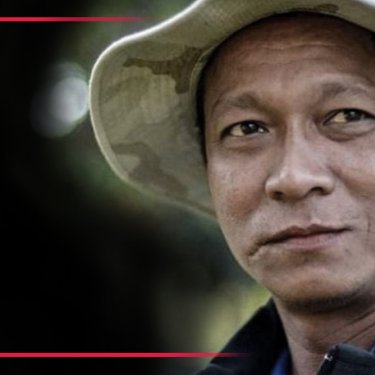UN asked to investigate Myanmar photographer’s death in custody

After tracing the sequence of events leading to the tragic death of Aye Kyaw – the fourth journalist to be killed by Myanmar’s junta since taking power in a coup 18 months ago – and noting the many still unexplained aspects, Reporters Without Borders (RSF) asks UN representatives to investigate the case and call the junta to account.
A photographer who had covered many anti-junta protests, Aye Kyaw was woken from his sleep at around 2 a.m. on 30 July at his home in Sagaing, a city in the centre of Myanmar, when six military vehicles pulled up outside. Groups of soldiers got out, broke down the door, searched his home and finally took him away.
A few hours later, at around midday, a member of the family was contacted by an official with the administration of Aung Chanthar district, where Aye Kyaw lived. He said Aye Kyaw’s body was at the Sagaing city hospital mortuary. He was dead.
“Two weeks later, there are still many unexplained aspects to Aye Kyaw’s tragic death,” said Daniel Bastard, the head of RSF’s Asia-Pacific desk. “At this stage of the investigation, only the senior levels of Myanmar’s military are capable of providing information about the circumstances of his death, which they are refusing to do. RSF urges Tom Andrews, the UN special rapporteur on human rights in Myanmar, and Alice Jill Edwards, the UN special rapporteur on torture, to hold Myanmar junta chief Min Aung Hlaing to account in this specific case.”
RSF has gathered as much information as possible in an attempt to understand what happened between Aye Kyaw’s arrest and his death. The soldiers aboard the six vehicles who arrived at his home said they had come to carry out a search because they had been told he had weapons in his home. But a neighbour speaking on condition of anonymity reported that no weapons or other suspect material were found.
Fear of reprisals
When contacted by RSF, Aye Kyaw’s family said they preferred not to talk to the media for fear of reprisals by Myanmar’s army. They have solid grounds for being afraid. When Aye Kyaw was finally buried on 31 July, the military gave the family specific instructions not to post any content about the funeral on Facebook.
While the exact causes of Aye Kyaw’s death remain unclear, a friend of the family quoted by the Burmese section of the US broadcaster Radio Free Asia (RFA) reported seeing many bruises on his ribs and back.
At the same time, a member of a charity funeral service who helped take the body from the hospital to a religious centre in Aung Chanthar district provided this chilling description: “We didn't see any superficial wounds on the body but I noticed his chest was extensively sown up like a post-mortem operation.”
Interrogation that got out of hand
This hastily sown-up wound supports the theory of a particularly violent interrogation that went too far and a subsequent cover-up attempt – a modus operandi that recalls the case of Soe Naing, another photographer, whose death in detention was reported by RSF on 14 December. After Soe Naing succumbed to injuries received during four hours of interrogation, those responsible also tried to cover up their crime by leaving his body outside a hospital.
Aye Kyaw’s death provides some insight into the hostility of the environment for journalists who stayed in Myanmar after the February 2021 coup d’état. For a description of this environment, RSF contacted Harry Aung, the head of the Assistance Association for Myanmar Independent Journalists (AAMIJ), which does its best to help reporters in the field.
“Journalists in Myanmar are carrying out their jobs in this challenging time,” he said. “They have no protection at all during this coup. But the junta has all means to charge them with criminal charges, and they have no right to defend themselves. Once arrested, they're thrown behind bars after long awful interrogations where they are badly tortured.”
Aye Kyaw, who did not survive his interrogation, ran the Hayman Photography Studio in Sagaing. But he had also covered many anti-junta protests and his photos had circulated widely on social media.
As well as Aye Kyaw and Soe Naing, two other journalists have been killed by Myanmar’s junta. They are Sai Win Aung, killed in December, and Pu Tuidim, killed in January.
Myanmar is ranked 176th out of 180 countries in RSF's 2022 World Press Freedom Index.
